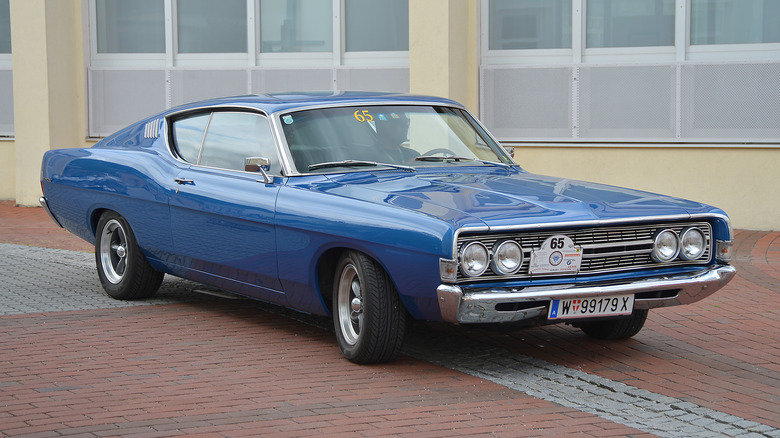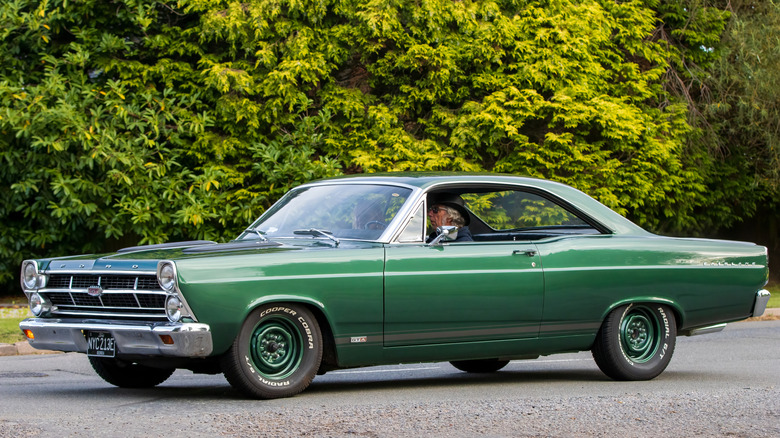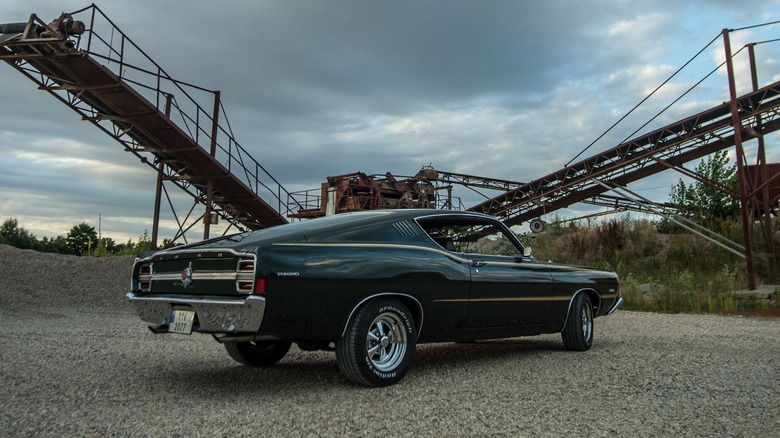Ford Fairlane Vs. Ford Torino: What's The Difference?
The Ford Fairlane and Ford Torino are often mistaken for rivals, proof that many motorheads are yet to discover that the two were cut from the same cloth. In fact, when the Torino name entered the scene, it was simply a trim level under the Fairlane lineup, before gradually edging its older sibling off the stage.
Suffice it to say, the two vehicles were mechanically similar, employing the same 116-inch wheelbase and sharing different body types. However, Ford marketed the Torino as a sleeker and sportie vehicler. By 1970, the Torino had built a name for itself, completely displacing Fairlane as Ford's primary mid-size vehicle, and by 1971, relegating it to the past. This was during a time when consumer tastes for cars were shifting, moving away from raw muscle cars — which the Fairlane had versions of in the GT and GTA trims – to sleeker, more style-forward offerings.
Ford's solution at the time? Give the Fairlane a stylish facelift and rebrand the higher-end models under the new Torino badge. In fact, when the 1968 Torino debuted, it was still a Fairlane copycat, only with a new name and better trim. It wasn't until 1970 that the Torino outsold the Fairlane and pulled way ahead in identity, leaving the classic Fairlane to fade away quietly after.
The Fairlane was Ford's mid-size workhorse and muscle pony
The Ford Fairlane had established itself as a reliable mid-size vehicle by the early 1960s. It had enough muscle to keep up with the growing performance and muscle car craze, while also offering a wide range of trims, and practical size. In terms of its placement at the time, the Fairlane was positioned between the full-size Galaxie and the compact Falcon, allowing buyers to upgrade without going overboard.
The introduction of the Fairlane GT and GTA in the mid-1960s marked a pinnacle in performance. Sport suspension, dual exhausts, 390-cubic-inch V8 engines, and either Ford's SportShift Automatic or 4-speed manual transmissions were standard on these versions. It's safe to say the Fairlane GT, even if not as flashy as, say, a second generation Chevelle SS, or as raw as a GTO, was a strong muscle contender — an excellent choice for buyers who wanted a decent amount of brute power at their disposal, but with restraint.
Then came the Ford Fairlane Thunderbolt, launched in 1964, a factory-built drag-strip beast with limited production for the NHRA Super Stock competition. Fresh off the factory floor, it packed a race-ready 427 FE V8 under the hood, lightweight fiberglass body panels, and very minimal creature comforts, but enough power to run the quarter-mile in scorching times. No aftermarket mods necessary. Despite being one of the most extreme factory muscle cars to ever roll out of Ford production lines, only 100 of them were ever made.
The Torino had the style, power, and eventually, the legacy
The Torino's striking makeover elements included smoother sides, quad headlamps, a full-width recessed grille, and the unique SportsRoof fastback body shape. Equally important, richer trim and additional comfort options were added to the interiors, and the trim staging was raised above the Fairlane 500 and basic Fairlane levels.
Engine options ranged from straight sixes to powerful FE series V8s. For instance, the Torino GT came with the 302-cubic-inch V8 as the standard, even though buyers could also spec rarer factory options, such as the 390 four-barrel V8 with up to 325 horsepower, the 428 Cobra Jet, officially putting out 335 horsepower, but it was underrated from the factory, and in very rare instances, the legendary 427 FE big blocks used in Ford's racing program. Better yet, all these variants were supported by sporty yet functional styling upgrades like hood scoops, dual exhausts, stiffer suspensions and upgraded chassis components. Bottom line, the Torino is much cooler than you remember.
In 1970, Ford made the Torino the primary mid-sized offering, alongside the Falcon. The Fairlane, on the other hand, briefly became a subseries before going extinct. Before retiring in 1976, right around the time emissions regulations and oil crises began reshaping the automotive industry as a whole, the Torino survived for three generations, from 1968 to 1976. During its tenure, it gave rise to muscle classics like the Cobra, Talladega, and Torino King Cobra, not to mention making a name for itself in NASCAR and drag racing history.


